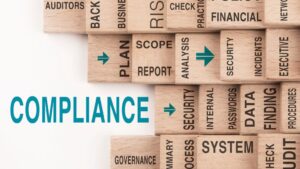It is important to know the motives of fraudsters. The awareness in the prevention of fraud cannot be overstated. An organization is unlikely to be successful in mitigating or moderating fraud unless it is aware that it is occurring – or that it could occur. Mitigating fraud can be difficult because fraud evolves and changes over time, and the rate of change is accelerating as new technology is introduced.
The Motives Of Fraudsters
Albrecht, Howe, and Romney
Dr. Steve Albrecht and two of his colleagues, Keith R. Howe and Marshall B. Romney, conducted research that identified ten environmental factors resulting in fraud incidents.
These factors cover aspects such as placing too much trust in key employees, lack of proper procedures for authorization of transactions, inadequate disclosures of personal investments and incomes, no separation of authorization of transactions, lack of independent checks on performance of employees, inadequate attention by management, no separation of duties in finance function, lack of clear lines of authority and responsibility and infrequently reviewed by internal auditors.
Hollinger and Clark
Richard C. Hollinger and John P. Clark published Theft by Employees, a study based on federally funded research involving surveys of nearly 10,000 U.S. workers. Hollinger and Clark concluded that employees steal or commit fraud primarily because of workplace conditions and job dissatisfaction. The true costs of the problem are vastly understated.
“In sum, when we take into consideration the incalculable social cost, the total paid for theft in the workplace is no doubt grossly underestimated by the available financial estimates.”
Hollinger and Clark proposed that fraud prevention requires that the management of the organization pay particular attention to the following four aspects of workplace environment or workplace conditions:
Having a clear understanding of theft behavior,Continuously disseminating positive information reflecting the organization’s policies and processes,Implementing processes and procedures to enforce sanctions, andDissemination of the sanctions policies and procedures to the employees and stakeholders.
Wolfe and Hermanson
According to Wolfe and Hermanson, various frauds may not occur without the right person with the right ability to carry out the fraud activity. It is said that opportunity provides the doorway to fraud incidents, and the incentives can draw the person towards such fraud.
But the person must have the ability to recognize the open opportunity to commit the fraud and to take advantage of it by performing a walkthrough repeatedly. The critical question to understand is who could turn an opportunity for fraud into reality.
As per Wolfe and Hermanson, frauds are usually committed where large sums of money are involved or displayed as an opportunity. The fraud occurs due to numerous factors such as:
The person committing fraud being in the position which provides him the ability to create or exploit the fraud opportunity;The person being able to exploit internal control weaknesses;The person feeling confident that he will not be caught. He may believe that he can talk his way out of any trouble caused after committing fraud;The person may coerce others to commit or conceal fraud;The person is smart and may be a perpetual liar; andThe person is strong enough to deal with the stress that comes from committing fraudulent acts.
Fraudsters Motives
Fraudsters may be motivated by:
GreedNeed for moneyThe pathological desire to commit crimeThe desire to defy the system – the ‘catch me if you can’ mentalityCoercion (people may be forced to do something by their peers, family, or superiors)Using funds to purchase illegal goods such as drugs or firearmsIdeology (doing something for the sake of the ‘greater good,’ as in the case of terrorist organizations)
Final Thoughts
When confronted with this reality, one must ask the logical question: How do good people go bad? Greed is an obvious answer. However, many so-called greedy people do not lie, cheat, or steal to obtain what they desire.
There are two distinct but related explanations for why employees commit fraud. The first is based on a Hollinger and Clark study of 12,000 workers conducted 20 years ago. It discovered that nearly 90% engaged in “workplace deviance,” which included goldbricking, workplace slowdowns, sick time abuse, and pilferage. Furthermore, an astonishing one-third of employees had stolen money or merchandise on the job.





